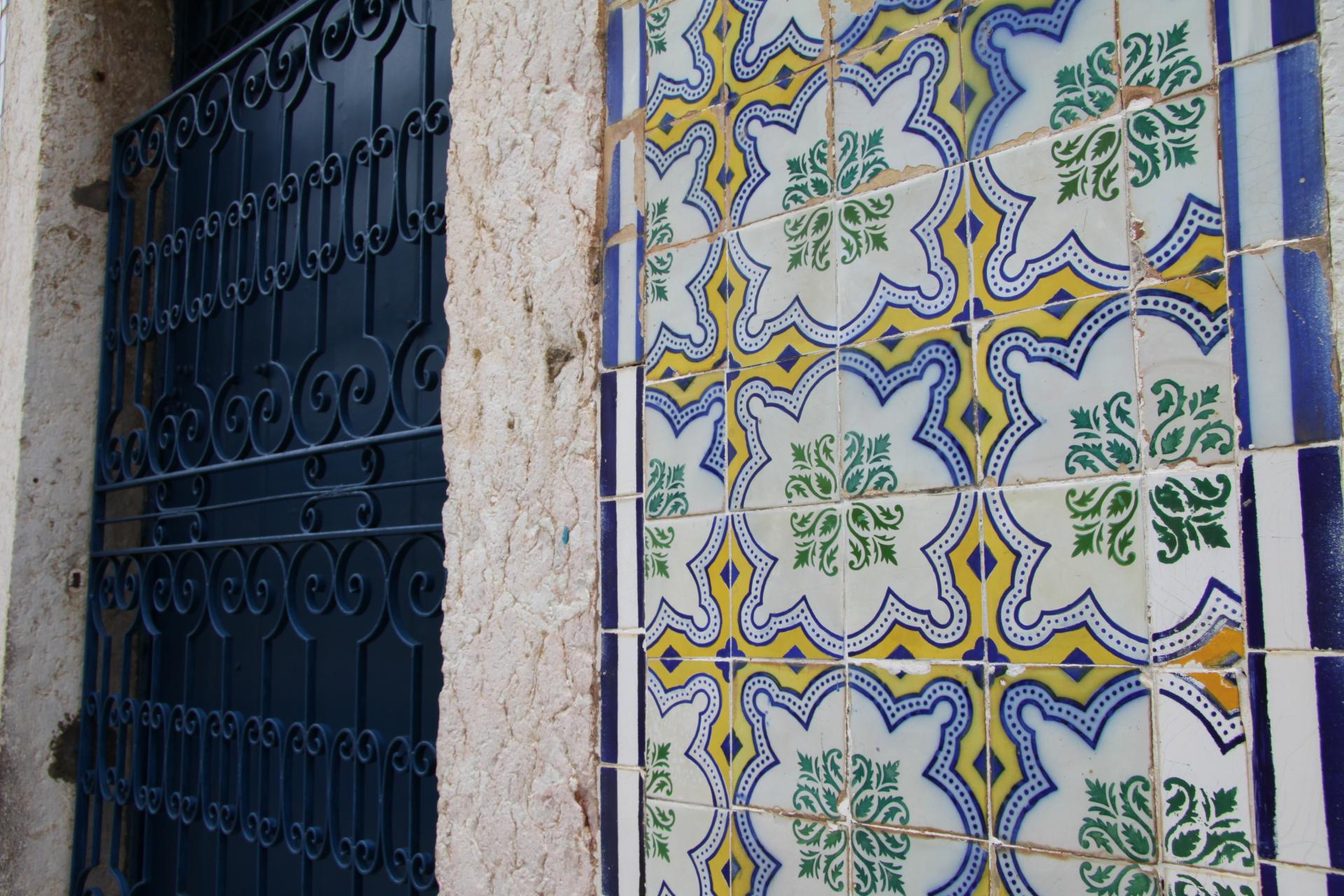Azulejos in Brazil

Azulejos, more than just colorful decorations
White sandy beaches, tropical rainforest and lively big cities with unique sights are usually part of a Brazil vacation. But Brazil is more than that. Brazil is colorful, cheerful and multifaceted and you can see that also in the houses. Colorfully painted houses are not a rare sight in Brazil. But have you ever noticed that many houses are decorated with tiles? Azulejos, as the tiles are called in Portuguese, have their tradition, which we will take a closer look at today.
How the azulejos came to Brazil
Tiles are one of the oldest forms of decorative art. They have always been widely used in architecture due to their durability, technical characteristics and visual richness. The name "Azulejo" is derived from the Arabic word "Al-zulaij", which means "small polished stone".
The history of tiles goes back to the first civilizations. It is known that as early as the fourth millennium BC, the Egyptians decorated their houses with blue glazed tiles. The Muslim empires were responsible for the spread of ceramics as wall coverings. Under the influence of Chinese ceramics, they soon began to use tiles both indoors and outdoors.
In the 16th century, Azulejos began to spread to the Iberian Peninsula as well. On a trip to Spain in 1498, King Manuel I learned how to make and paint the tiles. The splendor, opulence and fantasy of the ornamental motifs came from the East. From China came the blue of porcelain, which in the second half of the 17th century gave the tile compositions a non-repetitive character, full of dynamism and moving forms. The tiles were widely used in public, private and religious buildings, covering interior walls and facades.
The Portuguese colonization of Brazil brought Azulejos, the same technique and materials also to Brazil. During the 17th century, Azulejos continued to develop in both countries, reaching a high decorative level. In Brazil, colorfully patterned Azulejos in the form of carpets framed by smaller tiles did not achieve the same importance as in Portugal, but were well represented, especially in Pernambuco and Bahia.
At the end of the 17th century, the colorful Italian-style ceramics lost their place to the novelty of blue porcelain, imported from China and then copied in Holland, England and Italy. Thus, the Portuguese also began to produce the Azulejos in two different shades of blue. The most beautiful specimens were sent to Brazil, such as the blue-patterned tiles that lined the interior of the church of Nossa Senhora dos Prazeres in the Montes Guararapes in Pernambuco.
In the Brazilian colony, Portuguese and Dutch Azulejos were very well received and integrated into the culture, both for their decorative and technical properties, as the tiles are waterproof, protect against moisture, are easy to clean and reflect the sun, ensuring better thermal comfort on the facades. Beautiful examples from the colonial period can be found mainly in the North, Northeast and Rio de Janeiro, such as the beautiful 18th-century panels in the small church of Nossa Senhora da Glória do Outeiro.
Beginning in the 1930s, the reuse of tiles occurred as part of modern Brazilian architecture, especially through the neo-colonial movement, which sought to use local materials. In 1940, Paulo Rossi Osir founded the tile company Osiarte, which executed incredible works such as the Portinari panel in the Ministry of Education and Public Health in Rio de Janeiro. The project was completed in 1945 by Le Corbusier in collaboration with Lúcio Costa, Oscar Niemeyer and Affonso Reidy.
São Luís - A City of Tiles
São Luís, the capital of Maranhão, has many nicknames. One of them is "Cidade dos Azulejos", "City of Tiles". Visiting the historical center of São Luís, one has the impression that this is a city of porcelain, because so many tiles as here, one rarely gets to see in a city. The historic center of São Luís was declared a World Heritage Site in 1997. Many of the buildings date back to colonial and imperial times.
São Luís was founded by the French, conquered by the Dutch and colonized by the Portuguese. It is said that when São Luís was built, it was decided to cover the facades with tiles, as they were the most suitable for the climatic conditions of the region. In other words, tiles are resistant to very strong summer sun, a lot of rain and also act as a thermal insulator. In this way, the indoor climate becomes cooler and more comfortable. By the way, most of the tiles used in São Luís came from Portugal.
As you can see, Azulejos in Brazil have their history. Keep your eyes open on your next trip to Brazil. If you're lucky, you'll get to see some Azulejos, especially if you're traveling in northeastern Brazil.
Sources: memoria.ebc.com.br, www.belasartes.br, www.natgeo.pt, www.wikipedia.org

